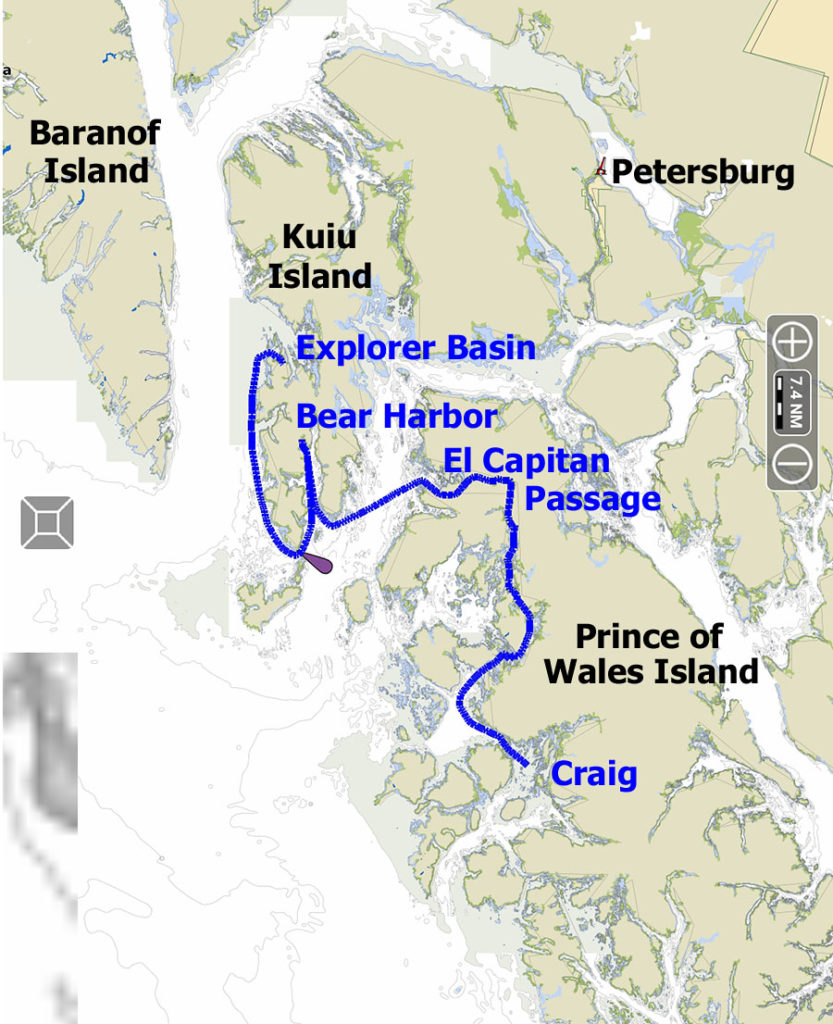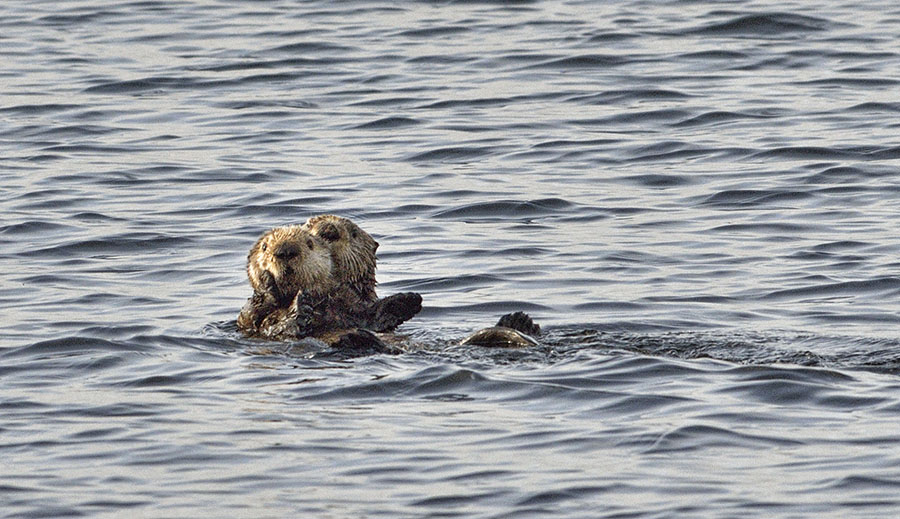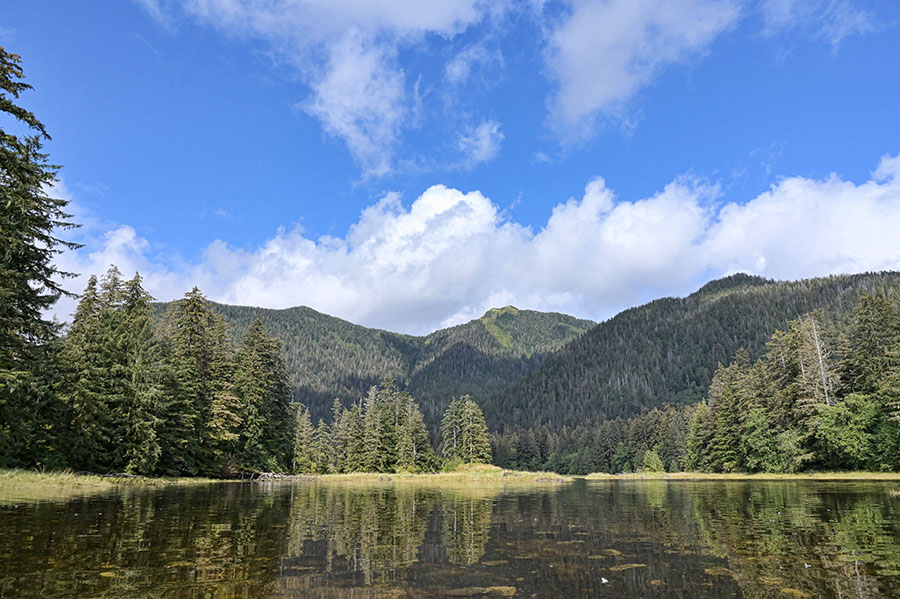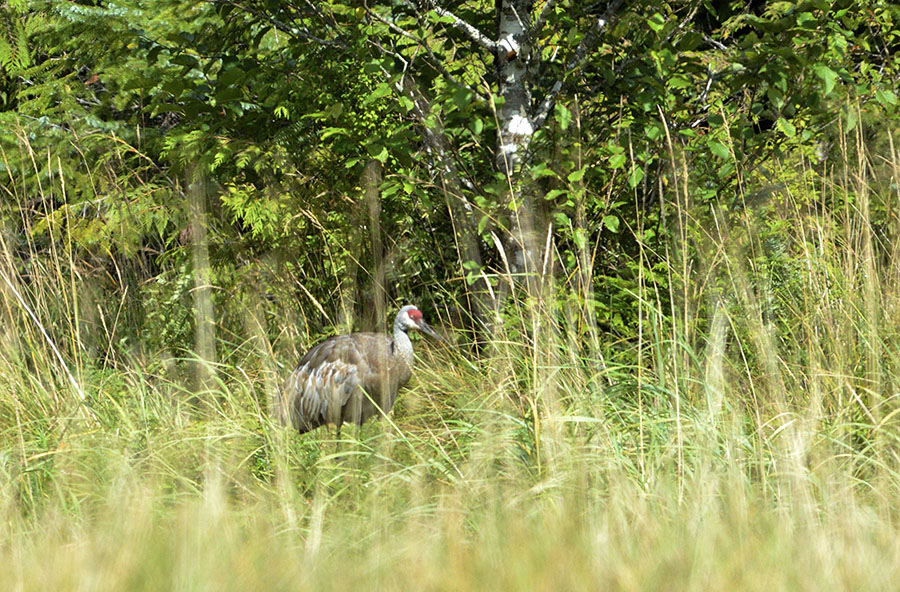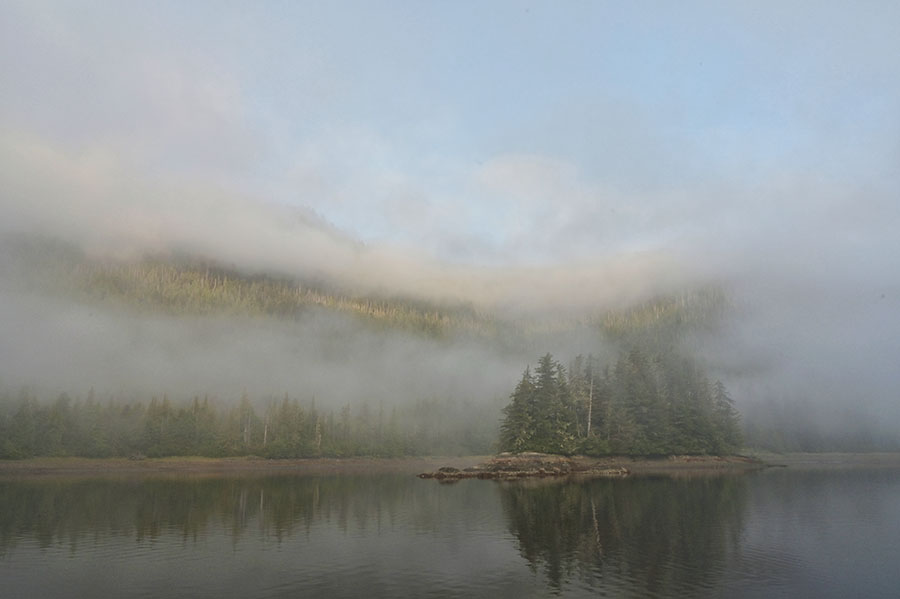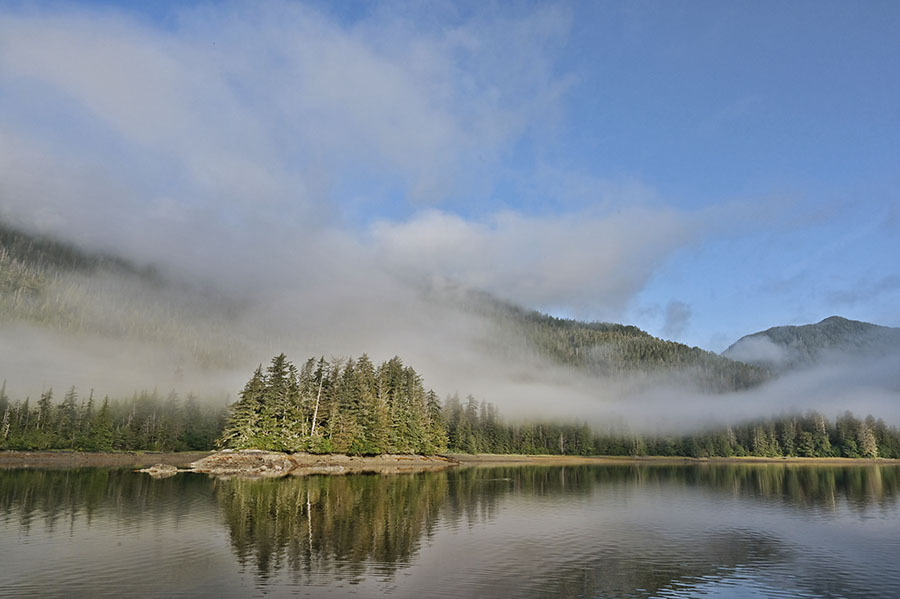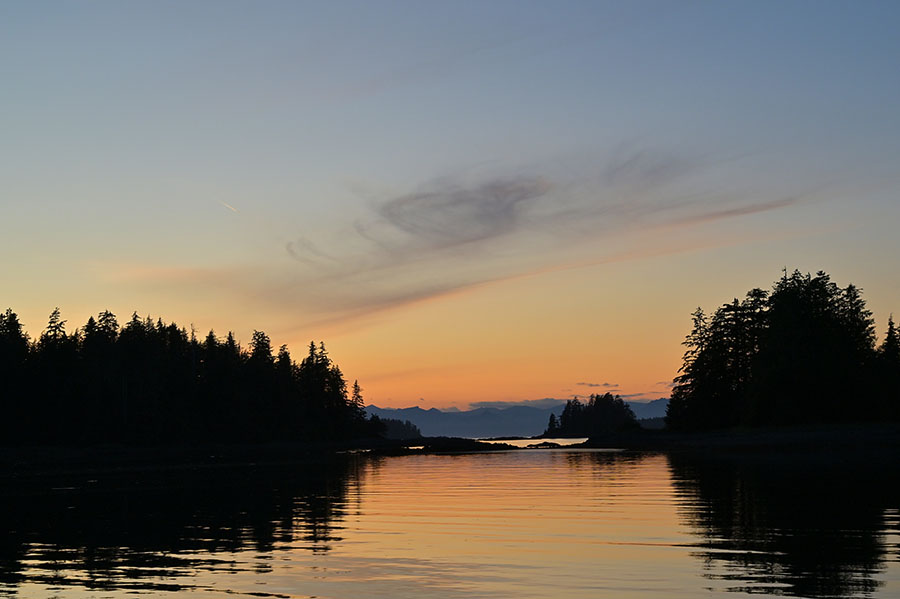Named after a Governor of Russian-America in the mid-19th century, Tebenkof Bay has been a home and hunting/gathering area for Tlingit people from Kake and Klawock for hundreds of years. It’s a big bay, with lots of islands and narrow passages, mountain lakes that drain into marshy meadows, and a number of neat places to anchor. The cruise from our anchorage in Explorer Basin to Shelter Cove in the back of the bay took over and hour – it’s a surprisingly big area.
As soon as we got the anchor down I grabbed the drone and flew around the cove to get the lay of the land before I ventured out in the kayak. If you follow around the perimeter of all the nooks and crannies, it’s about 5 miles of paddling. I was particularly hopeful about the shallow streams in the back meadow – good bear territory since there were plenty of salmon in the water, but no joy. Regardless, it always amazes me how rocks-trees-water can be arranged in so many beautiful ways.
Today’s post is primarily about the sky. Dramatic by day…
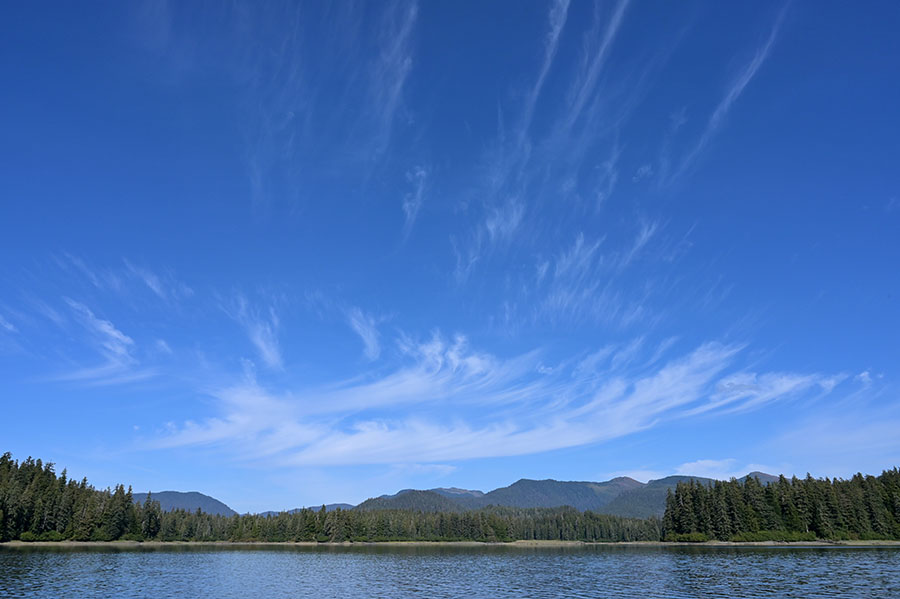
…but really jaw-dropping by night!
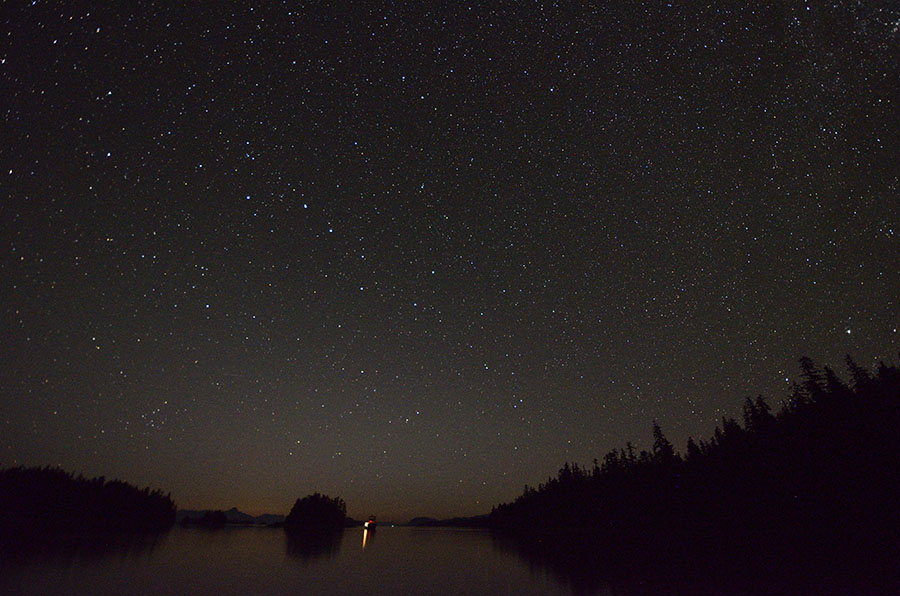
The light at the bottom of the photo is our boat, and I hope you can see the Big Dipper – it stands out a bit more brightly just to the left of center. Our daylight is shrinking fast now, by 5 minutes a day, but the optimist in me likes being able to see the stars without having to stay up half the night!
In the daylight I found a good spot on shore that faced north to practice my star photography, and I used the kayak to get there once it got dark. I had a radio so I could talk with Jim, bear spray, tripod, camera, star tracker and head lamp – quite a load of stuff. As luck would have it, the tide was rising in the evening. I set the tripod high up on the beach and pulled the kayak up as far as I could, but by the time I wrapped things up I was standing in the incoming tide.
I spotted a funny glow on the NE horizon while I was trying to shoot stars, and sure enough… it was an aurora!
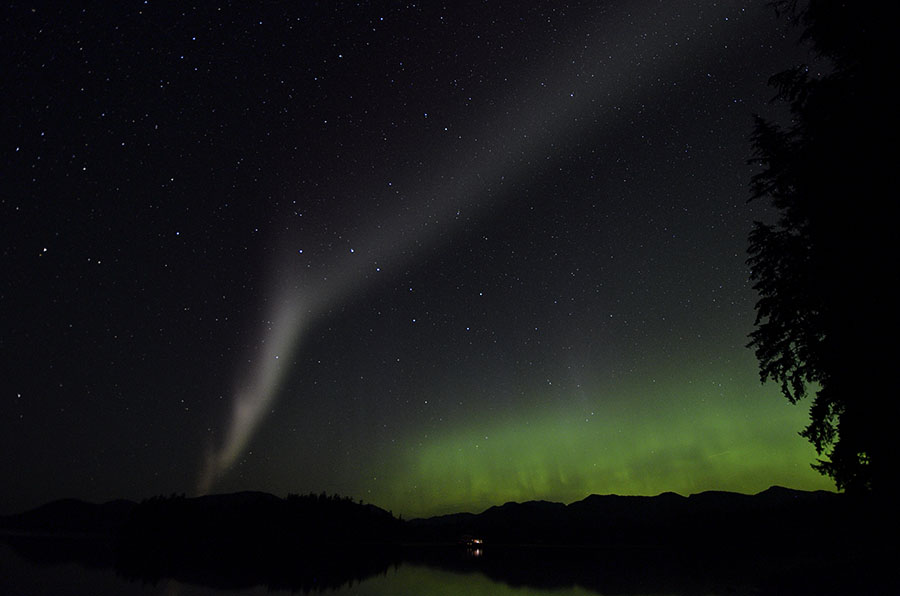
You can still see the glow of our boat low in the frame, and the Big Dipper above it. The white band shifted and danced a bit, and reflected in the mirror-smooth water. Yowza!
As it got darker I could see the Milky Way, though that white aurora band crossed the sky and bisected the Milky Way for a while. It’s a great problem to have when your Milky Way shots are spoiled by the aurora. Eventually the white band disappeared and I could get a few images.
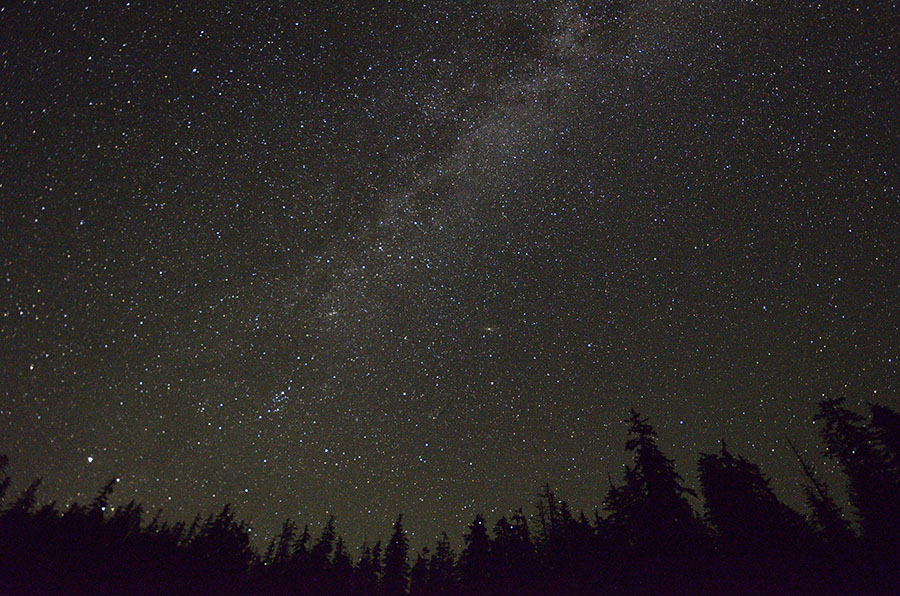
I planned to go out the next evening and find a better position to shoot the entire Milky Way across the sky with a wider angle lens. The night was clear and pleasant, I got my gear set up farther up the beach (it didn’t help – the tide still caught up to me), and I was all set for stars when this happened…
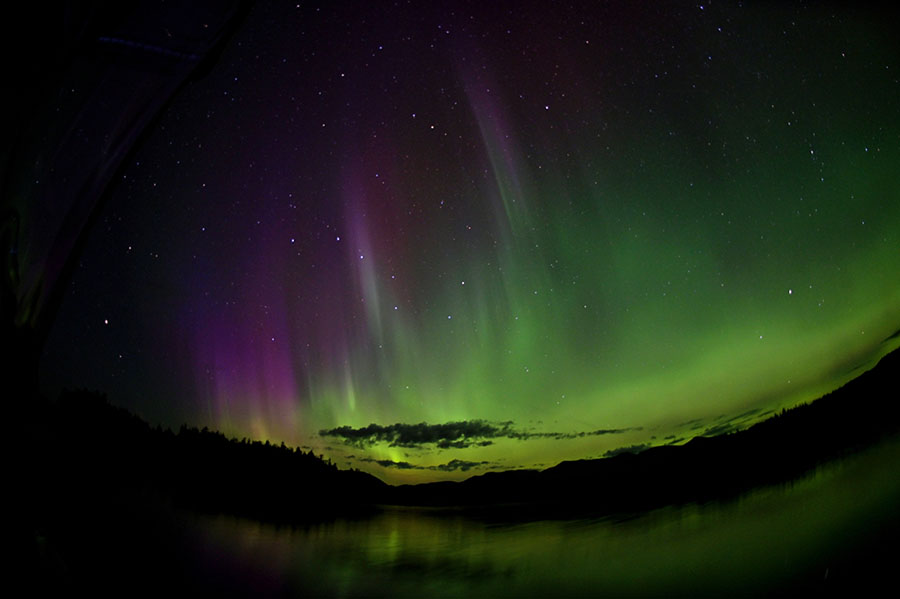
It danced, it undulated like a curtain in a breeze, it shot colors into the sky. We had a show for almost two hours! It was so exciting that I completely forgot about the Milky Way. The tide finally chased me off the shrinking beach and we sat up on the boat deck just watching the light show. Magical.
We don’t get to see the aurora down here in Alaska’s “panhandle” as often – sometimes the aurora just isn’t visible this far south, and our frequently overcast weather hides it when it is. As fall turns to winter the aurora tends to show up later (after midnight) and it’s not as much fun waiting in the cold, so these autumn gifts of pleasant evenings and earlier light shows are treasures to savor.

